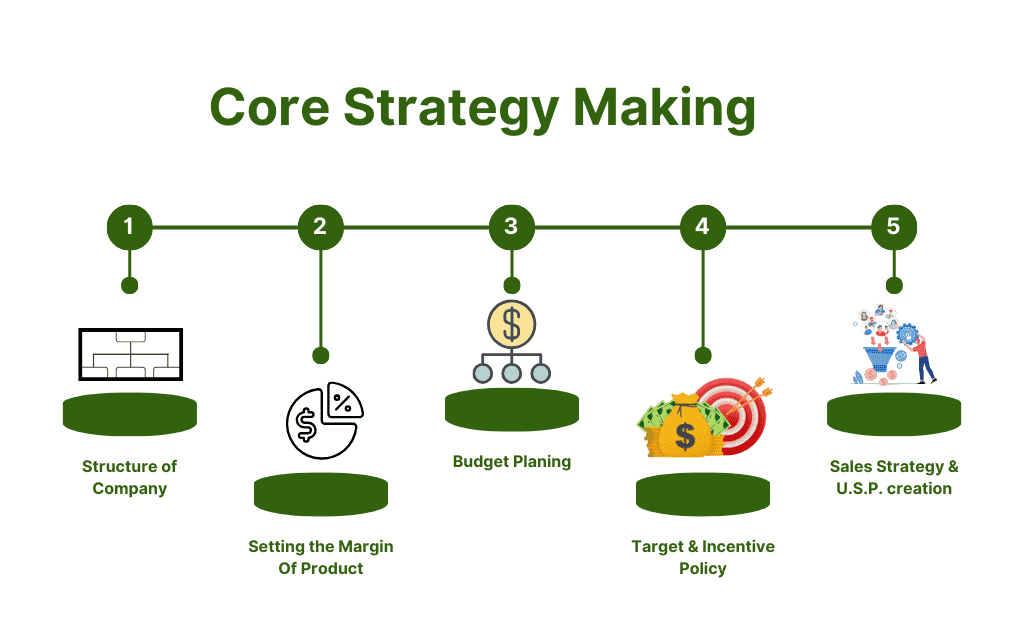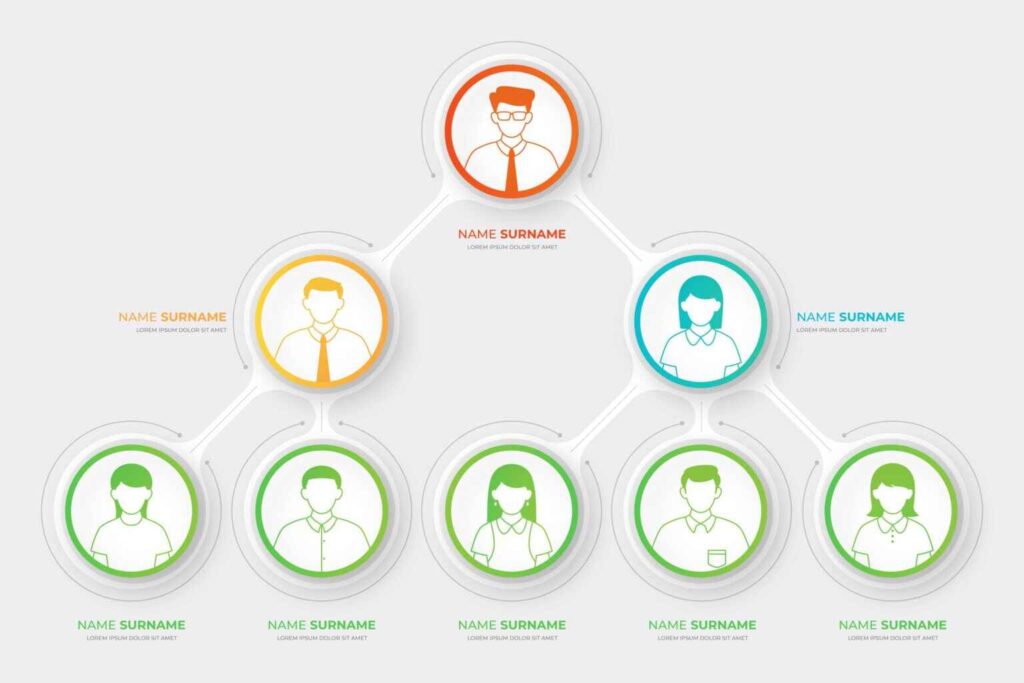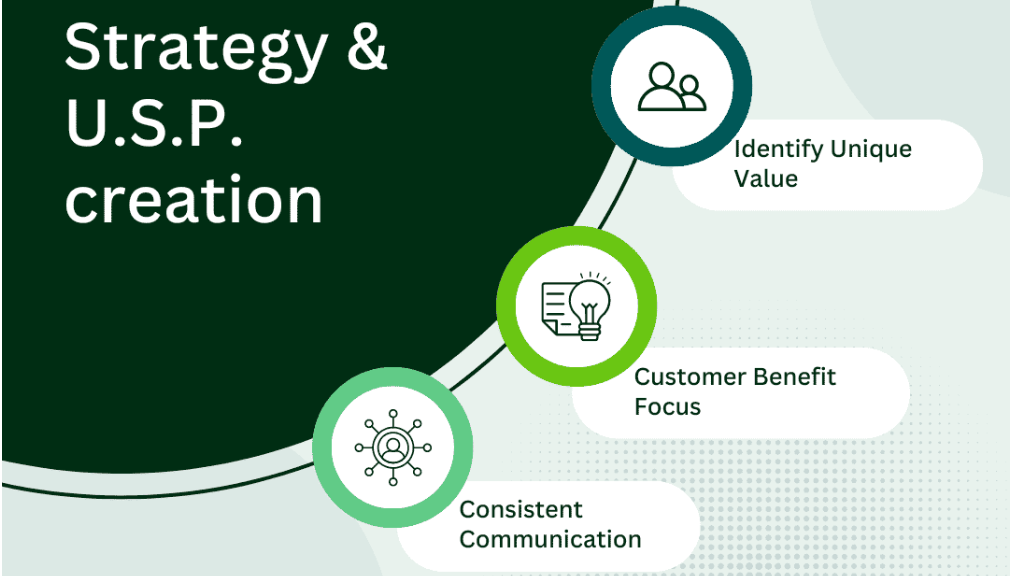Core Strategy Making – “In core strategy making, I assist you at every level of launching and operating a successful company. I help define the type of company you should establish, focus on initial target doctors, recommend product launches, structure your organization effectively, determine team size, and set budgets. I also guide setting product profit margins, schemes, discounts, salaries, and incentives, and implementing robust reporting systems to ensure smooth business operations. Additionally, I specialize in creating scientifically-backed visual content, detailed product narratives, and innovative packaging to strengthen your brand’s market position.


Structure of Company
- Organizational Chart: This visual representation outlines the hierarchy and reporting relationships within the company, showing how different departments and roles are structured from top management to entry-level positions.
- Executive Leadership: Comprising the CEO and other C-level executives (CFO, COO, etc.), this group sets the strategic direction and oversees major decisions, guiding the overall operations and growth of the company.
- Functional Departments: These units specialize in different aspects such as marketing, finance, human resources, operations, etc., each contributing specific expertise to support the company’s objectives and daily functions.
Setting the Margin Of Product
Cost Calculation: Understand the total cost involved in producing or acquiring the product. This includes manufacturing costs, shipping, packaging, and any other expenses incurred to bring the product to market.
- Desired Profit Margin: Decide on the profit margin percentage or amount that you want to earn from each sale. This margin typically covers overhead costs, operating expenses, and desired profitability.


Budget Planning
- Income and Expense Estimation: Begin by estimating expected income from all sources and identifying anticipated expenses across various categories such as operations, production, marketing, and administration.
- Allocation and Prioritization: Allocate financial resources based on strategic priorities and organizational goals, ensuring that funds are distributed effectively to support key activities and initiatives.
- Monitoring and Adaptation: Continuously monitor actual income and expenses against the budgeted plan, making adjustments as needed to align with changing circumstances, economic conditions, or strategic shifts. Regular review and reporting help maintain financial discipline and support informed decision-making.
Target & Incentive Policy
Setting Targets/Objectives: Clearly define specific and measurable targets or objectives that align with the organization’s strategic goals. These targets could be related to sales targets, production goals, quality metrics, customer satisfaction scores, etc. Targets should be challenging yet achievable within a defined timeframe.
- Incentive Structure: Design a structured incentive plan that rewards employees or teams for meeting or exceeding their targets. Incentives can take various forms such as monetary bonuses, profit-sharing, commissions, performance-based salary increases, recognition awards, extra paid time off, or non-monetary rewards like career development opportunities or special privileges.
- Implementation and Monitoring: Implement the target and incentive policy consistently across the organization. Provide clear communication about the targets, the criteria for earning incentives, and the potential rewards. Monitor progress towards targets regularly and provide feedback to employees or teams to keep them motivated and focused on achieving their goals.


Sales Strategy & U.S.P. creation
- Identify Unique Value: Determine what distinguishes your product or service from competitors. Focus on unique features, superior quality, innovative solutions, exceptional customer service, or any other distinct advantage.
structured from top management to entry-level positions. - Customer Benefit Focus: Clearly articulate the specific benefits and advantages your offering provides to customers. Highlight how these benefits address customer pain points or fulfill needs better than alternatives available in the market.
- Consistent Communication: Ensure your USP is consistently communicated across all marketing channels and customer interactions. Reinforce your USP through branding, messaging, and customer experiences to build strong differentiation and brand loyalty.
